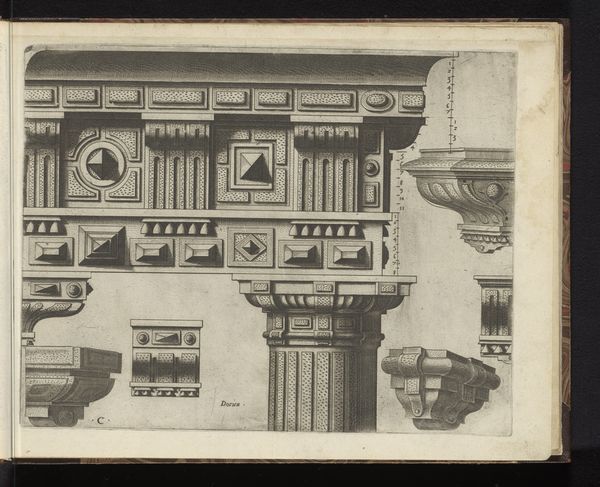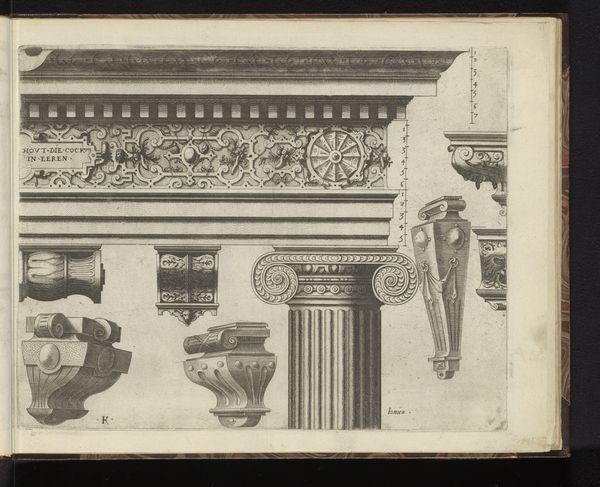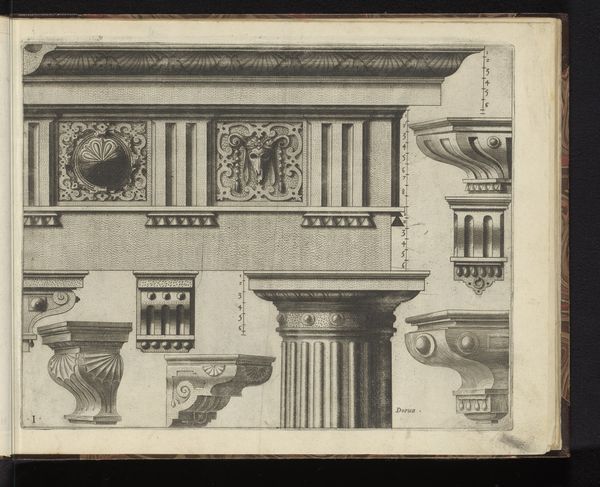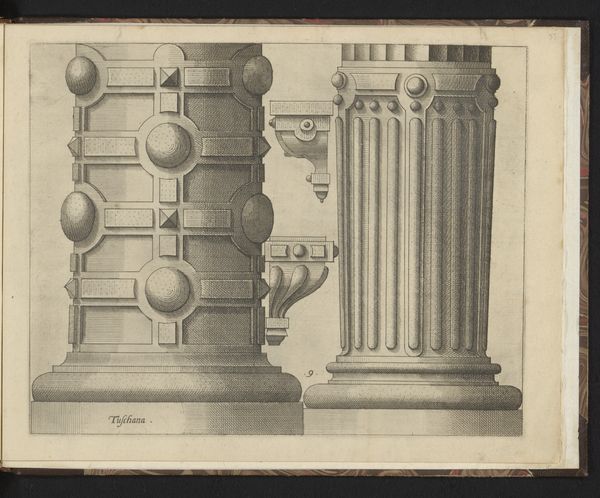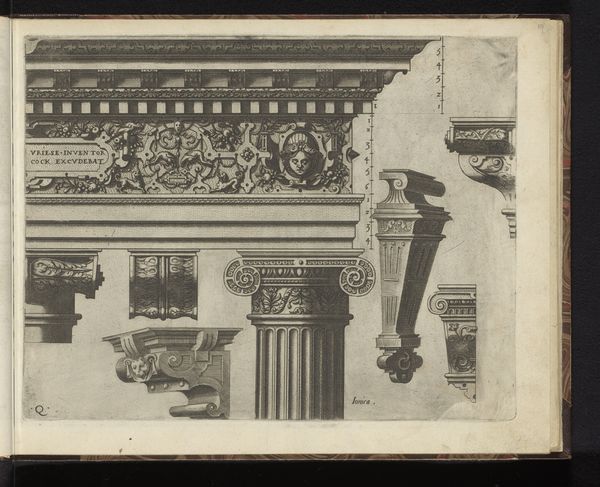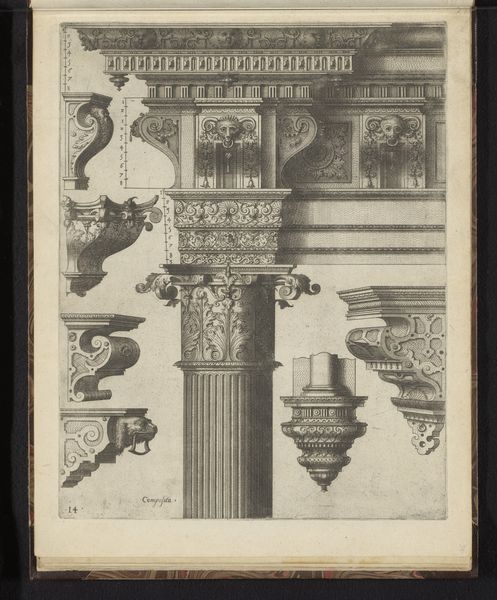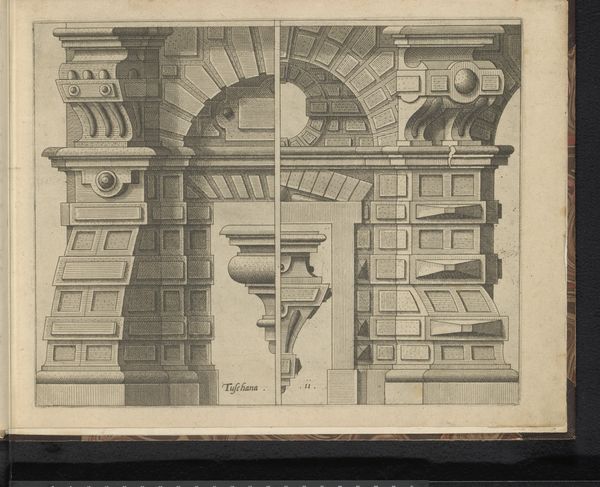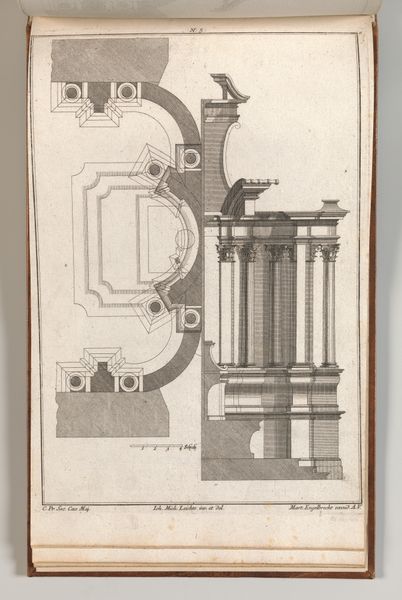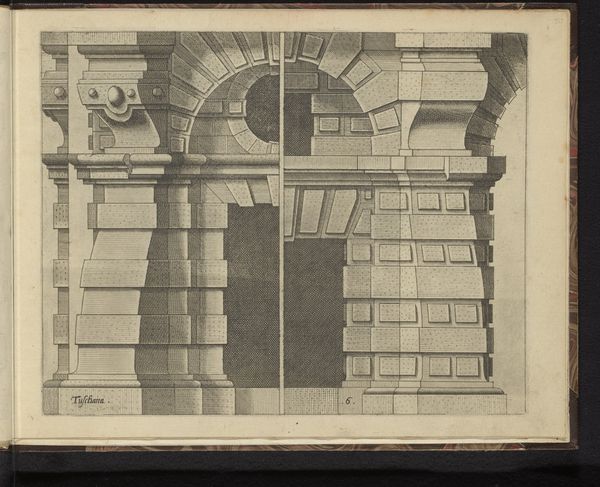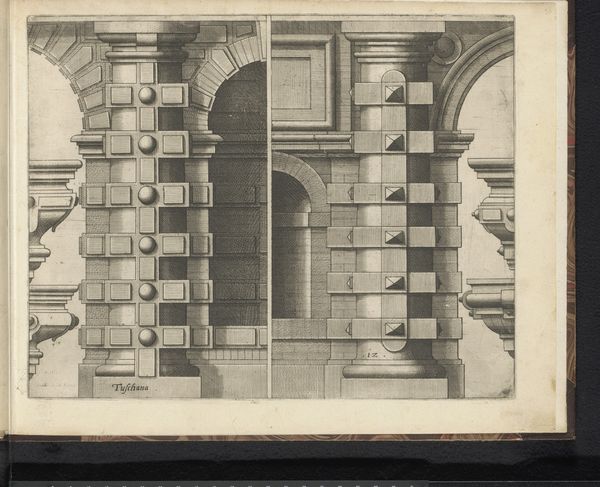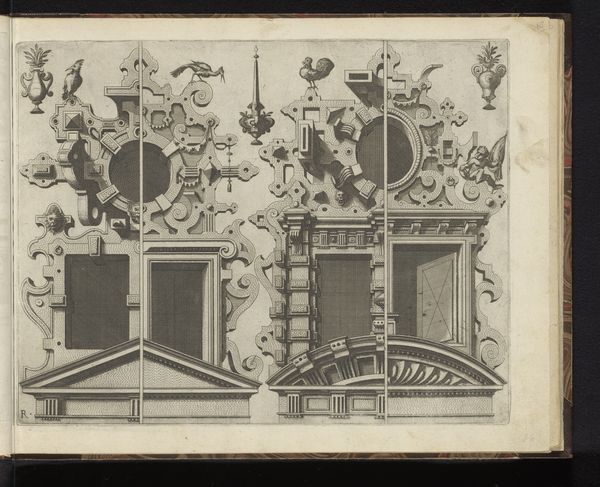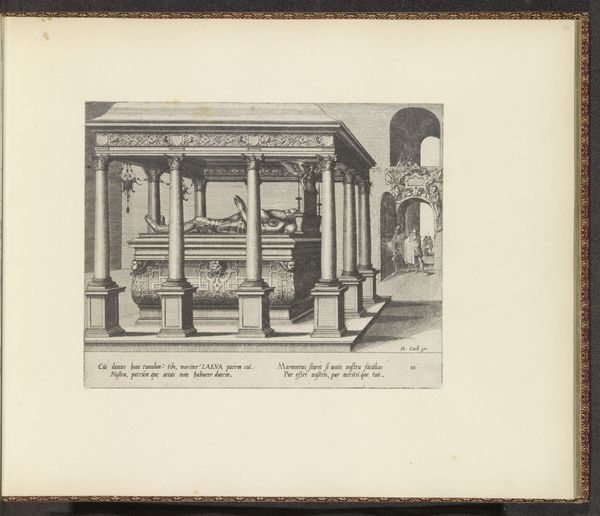
drawing, paper, engraving, architecture
#
drawing
#
paper
#
11_renaissance
#
coloured pencil
#
geometric
#
pen and pencil
#
engraving
#
pencil art
#
architecture
Dimensions: height 234 mm, width 301 mm
Copyright: Rijks Museum: Open Domain
Curator: This is "Ionic Capital," a drawing rendered in pen, pencil, and engraving on paper, created around 1565. It's currently held at the Rijksmuseum. The artist is Johannes or Lucas van Doetechum. Editor: Immediately, I notice the rigidity and almost mathematical precision. The level of detail is incredible, like looking at the architectural plans for some monumental structure. There is also something very cold about it, like the design process extracted from the making itself. Curator: Absolutely. Think about what an architectural plan represented in the 16th century. It was not just a representation but almost an idealized prototype before mass reproduction even existed. These aren't sketches, they're meticulously detailed engravings intended for widespread distribution among craftsmen and patrons. How this circulated influenced the architectural landscape itself. Editor: Yes, but there's also the undeniable visual language. Look at the repeated scroll motifs; these recall images of power, of ancient Greece. These curls, coils evoke notions of strength and cultural memory. Do you agree? Curator: To a point, but I also see this less about pure "symbolism" and more about design as functional instruction. This was about providing specific instructions for masons and sculptors. Consider how the material constraints would affect interpretations of these ideal forms. What stone was locally available? What was the cost of skilled labor? The symbolic intent is only partially relevant compared to material conditions. Editor: But doesn’t the very choice to depict specifically an Ionic capital connect to that powerful imagery of Classical architecture, and its symbolism that lasted well through the Renaissance? This drawing invokes cultural weight – ideas about order, beauty and historical authority. The aesthetic choices here must reflect symbolic consideration beyond pure function. Curator: Perhaps, but it's crucial not to overstate the symbolism separate from the practical knowledge being disseminated through this engraving. How can we detach the "aura" of classicism when so many artists had these plans constantly circulating, shaping their very act of production? Editor: I suppose where we differ is where we locate meaning. I focus on how the iconography, its careful echo of established power, while you stress the circumstances of the making and use of such a drawing as part of its larger value. It's a fascinating dichotomy to observe. Curator: Exactly, and by understanding that production and use, it completes the image in front of us in ways which the cultural symbols are never able to accomplish alone.
Comments
No comments
Be the first to comment and join the conversation on the ultimate creative platform.
